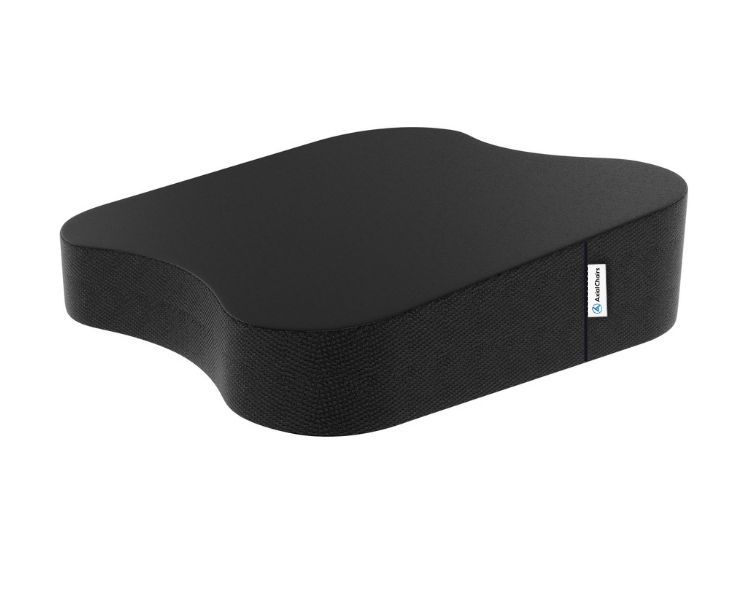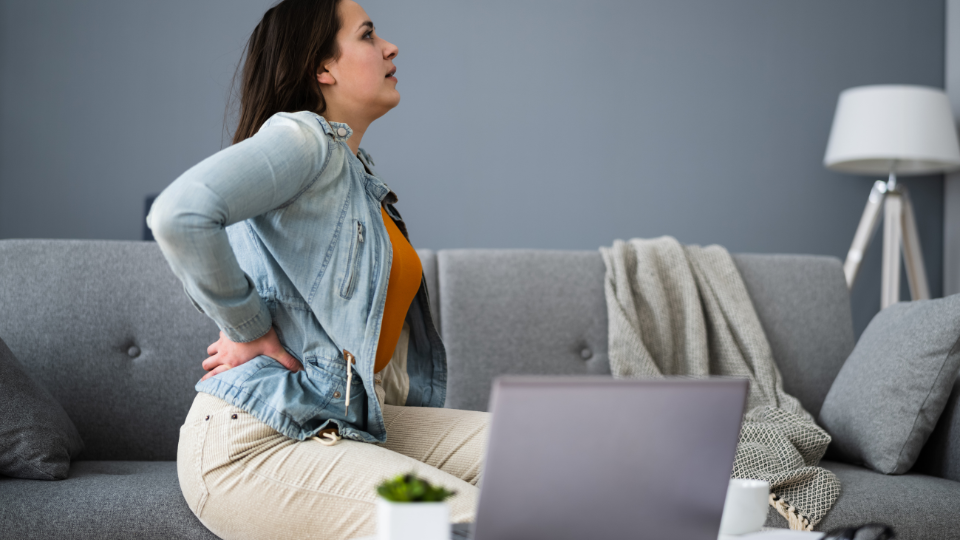Back pain seems to be an unavoidable part of life for many, and more often than not, it is thought of as simply something you will have to live with. However, research increasingly has revealed that much of the back pain experienced can actually be attributed to the way in which we sit. In fact, sitting causes a tremendous amount of strain on the spine and surrounding muscles, leading to persistent discomfort over time. This blog post looks deeper into why sitting leads to back pain, including potential solutions for combating this common problem. Read on to learn how even small changes in posture or habits can make a significant difference when it comes suffering from chronic aches and pains!
As a general rule, Sitting causes back pain due to poor posture, muscle imbalances, and reduced blood flow. Factors include: 1. Weak core & glute muscles 2. Increased spinal pressure 3. Slouched shoulders 4. Decreased nutrient supply. Alleviate pain by taking breaks, maintaining good posture, and strengthening core.
The Sitting Epidemic
In today’s fast-paced, technology-driven world, the prevalence of sedentary lifestyles has dramatically increased. The majority of people spend a significant portion of their day sitting, leading to various health complications, one of which is back pain. This article aims to explore the reasons behind why sitting causes back pain and provide recommendations for mitigating these issues.
The Anatomy of Back Pain: Understanding the Root Cause
To better comprehend why sitting leads to back pain, it is crucial to understand the basic anatomy of the spine and its surrounding muscles.
- Spinal Curvature: The human spine is naturally designed to have an S-shaped curvature. Prolonged sitting, especially with poor posture, disrupts this natural alignment, leading to strain and discomfort.
- Lumbar Disc Compression: Sitting places an increased load on the lumbar discs, causing them to compress. Over time, this compression can result in disc degeneration and contribute to chronic back pain.
- Muscle Imbalance: Sitting for extended periods can lead to weakened abdominal and gluteal muscles and tight hip flexors and hamstrings. These imbalances contribute to poor spinal support and back pain.
All Day Comfort & Support
The Dangers of a Sedentary Lifestyle: Far-Reaching Consequences
Beyond the direct impact on the spine, prolonged sitting has far-reaching consequences on overall health. Some potential dangers associated with a sedentary lifestyle include:
- Increased Risk of Chronic Disease: Studies have shown that sedentary behavior can contribute to the development of various chronic diseases, such as heart disease, diabetes, and obesity.
- Decreased Cognitive Function: Lack of physical activity can also negatively affect cognitive function, including memory and attention.
- Mental Health Concerns: Sedentary lifestyles have been linked to an increased risk of depression, anxiety, and other mental health issues.
Preventing Back Pain: Strategies for a Healthier Lifestyle | How to Sit Health | Sitting Position
Fortunately, there are several steps individuals can take to mitigate the risks associated with prolonged sitting and minimize back pain.
- Maintain Proper Posture: When sitting, ensure that your feet are flat on the floor, your knees are at a 90-degree angle, and your back is well-supported. Maintain a neutral spine by keeping your ears, shoulders, and hips aligned.
- Take Regular Breaks: To reduce the strain on your spine and muscles, stand up and stretch at least once every hour. This will help alleviate tension and promote better blood flow.
- Incorporate Physical Activity: Aim for at least 150 minutes of moderate-intensity aerobic exercise each week. Strengthening exercises targeting the core, glutes, and back muscles can also help improve posture and alleviate back pain.
- Adjust Your Workstation: Ergonomic adjustments to your workstation, such as using a standing desk or an ergonomic chair, can help promote proper posture and reduce the risk of back pain.
- Seek Professional Help: If you are experiencing persistent back pain, consult with a healthcare professional to determine the underlying cause and develop an appropriate treatment plan.
Lower Back Pain From Sitting Too Much | Exercises | Herniated Disc | Upper Back Pain | Ergonomic Chair
If you’re someone who spends a lot of time sitting, whether it’s due to work or other activities, you may have experienced back pain at some point. Back pain from sitting too much is a common problem, but there are exercises you can do to help relieve the pain.
One of the main causes of back pain from sitting is poor posture. Our bodies are evolutionarily not supposed to be seated for long periods of time, so sitting causes your hip flexor muscles to contract and can result in bad posture while seated. This can cause back pain, especially in the lower back.
To fix lower back pain from sitting, you need to take steps to improve your posture. This means sitting with good posture, keeping your feet flat on the ground and your back straight. You may also need to adjust your workstation to ensure that it is ergonomically designed for your body.
If you are experiencing lower back pain when sitting but not standing, it could be caused by a herniated disc or sciatica. In these cases, it’s important to see a doctor or physical therapist to determine the best course of treatment.
Best Seat Cushion for Back SupportAxial Ergonomic Seat Cushion® | Seat Chair Wedge
Quick Guide: A 30-Second Summary

All Day Comfort & Support
Product Name
Axial Designs™ Seat Cushion
Price
$149
Warranty
1 Year
Type
Posture Wedge
Top Layer
100% Natural Latex (Molded)
Bottom Layer
High-Density Foam
Top Material
Isometric Grippy Vegan Leather
Bottom Material
Non-Slip Material
Side Material
3D Breathable Fabric
Here are some exercises you can do to help relieve back pain from sitting too much:
- Cat-Cow Stretch: Get on your hands and knees, with your wrists directly under your shoulders and your knees directly under your hips. Inhale as you arch your back, lifting your head and tailbone toward the ceiling. Exhale as you round your spine, tucking your chin to your chest and bringing your tailbone between your legs.
- Pelvic Tilt: Lie on your back with your knees bent and feet flat on the ground. Inhale and tilt your pelvis up, arching your lower back slightly. Exhale and tilt your pelvis down, pressing your lower back into the ground.
- Hamstring Stretch: Sit on the ground with your legs straight out in front of you. Reach forward and try to touch your toes, keeping your back straight.
- Child’s Pose: Get on your hands and knees and then lower your hips back towards your heels, stretching your arms forward. This will stretch your lower back muscles.
- Cobra Stretch: Lie on your stomach with your hands under your shoulders. Press up through your hands, lifting your chest off the ground and stretching your upper back muscles.
By incorporating these exercises into your daily routine and taking steps to improve your sitting position, you can help alleviate back pain from sitting too much.
Summary
It is important to understand why sitting can cause back pain, because this knowledge may provide us with ways to prevent its occurrence or at least mitigate or lessen its seriousness when it does. Although we cannot completely avoid sitting in our day-to-day lives, by incorporating simple stretches and exercises into our daily routine and consciously avoiding long periods of static postures while sitting, we can help support our body’s optimal functioning while minimizing back pain. It is also important to ensure that your chairs are comfortable and well-suited for your height and physical requirements. In addition, if the back pain persists despite all of these measures, it is best to discuss with a physiotherapist or doctor as soon as possible as it might be an indication of an underlying health condition that needs further medical attention. Taking steps toward ensuring good posture and comfort while sitting will not only help keep one’s back healthy but also serves to improve overall bodily functionality.






